Sunapati Thangka School
Mandala: Sacred Geometry and Healing Art
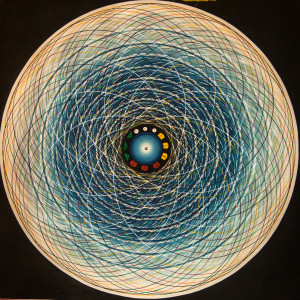 The word mandala is of Hindu origin and is derived from the root ‘manda’, which means essence, and the suffix ‘la’, meaning container.
The word mandala is of Hindu origin and is derived from the root ‘manda’, which means essence, and the suffix ‘la’, meaning container.
Mandala is a term that appears on a chapter of the Rig Veda, a collection of mantras or hymns chanted in Vedic ceremonies. The universe was believed to originate from these mantras, whose sacred sounds contained the genetic patterns of beings and things. This is the reason why it is possible to define “mandala” as a world-model.
In fact mandalas usually represent sacred places which, by their very presence in the world, remind a viewer of the immanence of sanctity in the universe and its potential in his or her self.
Generally speaking mandala is a term for any geometric symbol that represents the cosmic energy in a metaphysical or symbolic matter.
Mandala Buddhist Art
Among the many traditions of Buddhist art the three areas where the Tibetans have made the most significant contributions are mandalas, images of deities and portraiture. In the context of the Buddhist path the purpose of a mandala is to put an end to human suffering, to attain enlightenment and a correct view of reality. It is a mean to discover divinity by the realization that it resides within our own self.
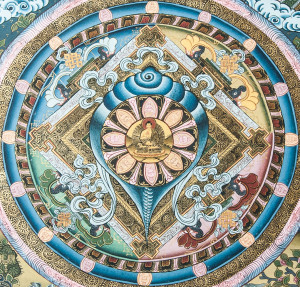 In Tibetan Buddhism mandalas are used for meditation and their specific designs reminding the practitioner of important guiding principle.
In Tibetan Buddhism mandalas are used for meditation and their specific designs reminding the practitioner of important guiding principle.
In fact it is used as visual aid for concentration and meditation leading to the attainment of insights and to activation of forces culminating in “Siddhi”, term used by tantric buddhism doctrine to define special psychic powers.
In its most common form, the mandala appears as a series of concentric circles. Each mandala has its own resident deity housed in the square structure situated concentrically within these circles. Its perfect square shape indicates that the absolute space of wisdom is without aberration. This square structure has four elaborate gates. These four doors symbolize the bringing together of the four boundless thoughts namely – loving kindness, compassion, sympathy, and equanimity. Each of these gateways is adorned with bells, garlands and other decorative items.
This square form defines the architecture of the mandala described as a four-sided palace or temple.
A palace because it is the residence of the presiding deity of the mandala, a temple because it contains the essence of the Buddha.
Mandala Healing Art
Painting mandalas isn’t an activity done merely in religious contexts.
It’s an art for everybody. And it’s a very effective Therapeutic Art !
Carl Gustav Jung introduced the Eastern concept of the mandala to Western thought and believed this symbol is a representation of the individuality and a reflection of the Self.
According to Jung, mandalas symbolize “a safe refuge of inner reconciliation and wholeness.”
The creative process of making mandalas helps to revisit the universal experience embodied in the circle and, as Jung found, helps us to experience and reflect on the essence of who we are in the here and now.
Not only are Mandalas very healing to paint but they radiate healing energy.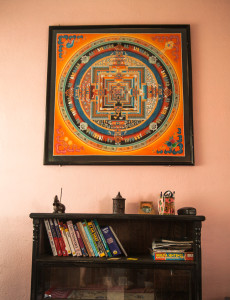
In fact when you have such a mandala in your house, its presence creates a powerful field of energy.
That is why we suggest our customers to place their mandala in a room where they spend five or more hours each day.
This could be your bedroom, your office or your living room.
If you are travelling in Nepal and you are willing to learn how to paint beautiful thangka and mandala paintings feel free to send us a message or contact us using your favorite social media:
Facebook
Twitter
Instagram
Sunapati Thanka Painting School
How To Order
- Browse our catalog and choose your favorite design.
- Select your preferred size and quality to check the price.
- Click on “Product Inquiry” to send us a message and we will check if we the artwork is immediately available. If not we will make it for you.
- Use the cart page to calculate the shipping cost by selecting your country.
- Once we receive your order we will start creating the artwork according to your preferences and provide you with updates and images upon your request.
We strive to ensure a smooth shopping experience with our assistance. We also welcome commissions of custom designs of thangkas, masks and mandalas.
Shipping and Payments
We offer trusted shipping options to ensure your purchases arrive in perfect condition, and delivered in 5 to 10 working days worldwide. We accept PayPal, debit/credit cards and bank wire transfer services.
About Our Community
We live in Changunarayan, a UNESCO heritage site located on a forested hill overlooking Bhaktapur and the Kathmandu valley. You are welcome to visit our art school and meet our community of artists and artisans.
Learn More About Our Thangka School And Workshops
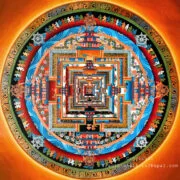 Kalachakra Mandala
Kalachakra Mandala 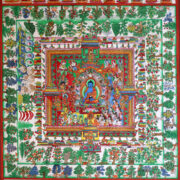 Medicine Buddha Paradise
Medicine Buddha Paradise 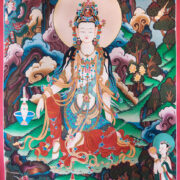 Quan Yin Thangka
Quan Yin Thangka 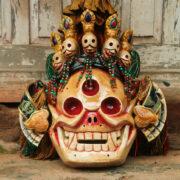 Citipati Mask
Citipati Mask 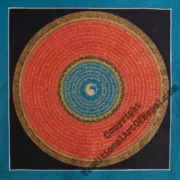 Triple Yin-Yang Mandala
Triple Yin-Yang Mandala 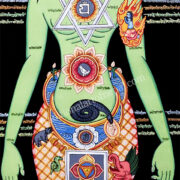 Chakraman Yogi
Chakraman Yogi 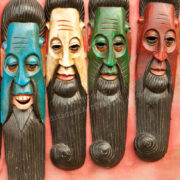 Sadhu Baba Masks
Sadhu Baba Masks 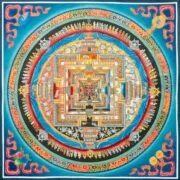 Kalachakra Mandala Auspicious Symbols
Kalachakra Mandala Auspicious Symbols 